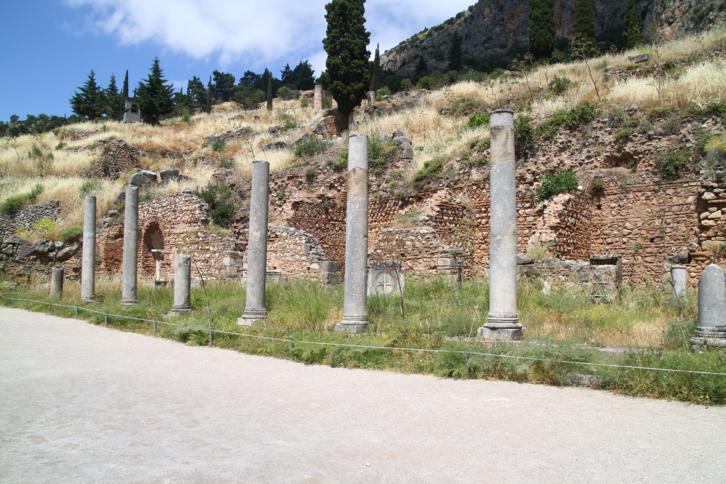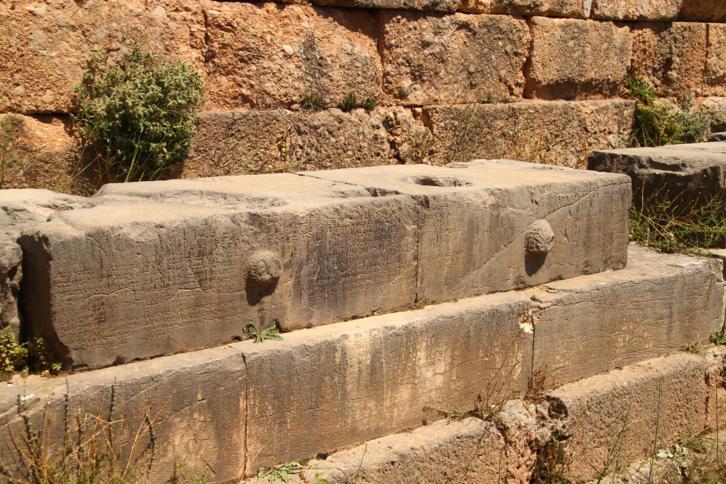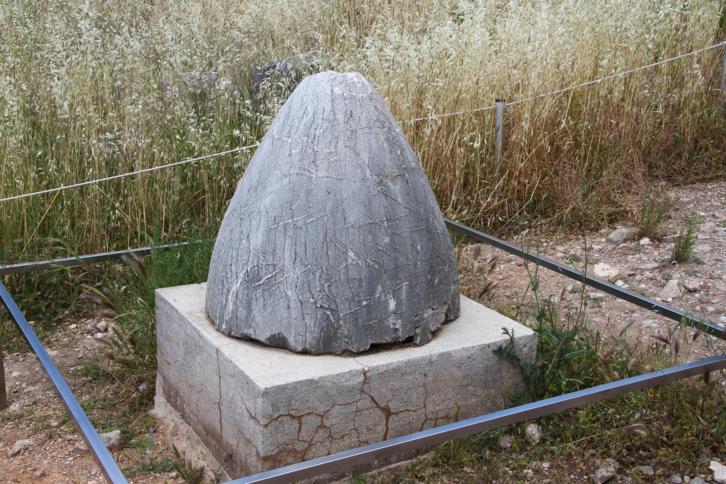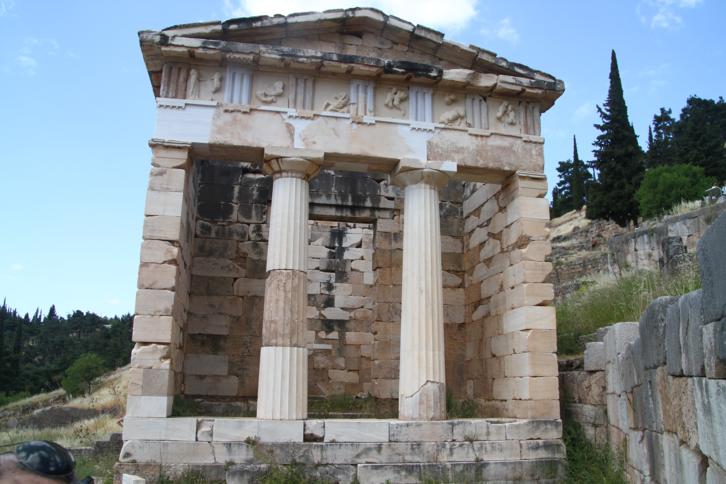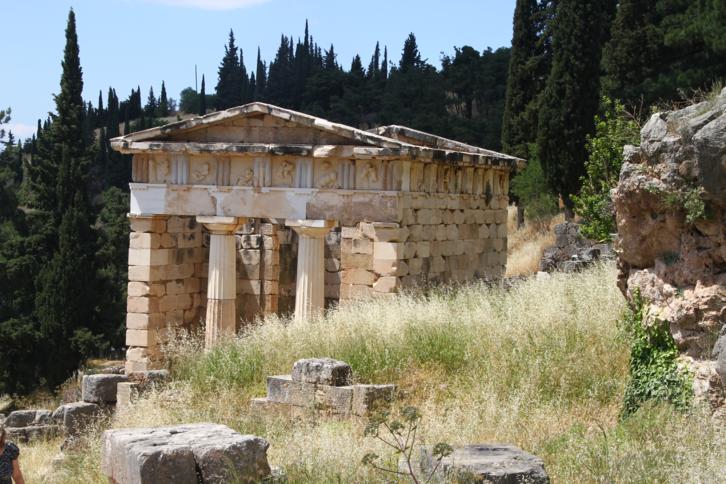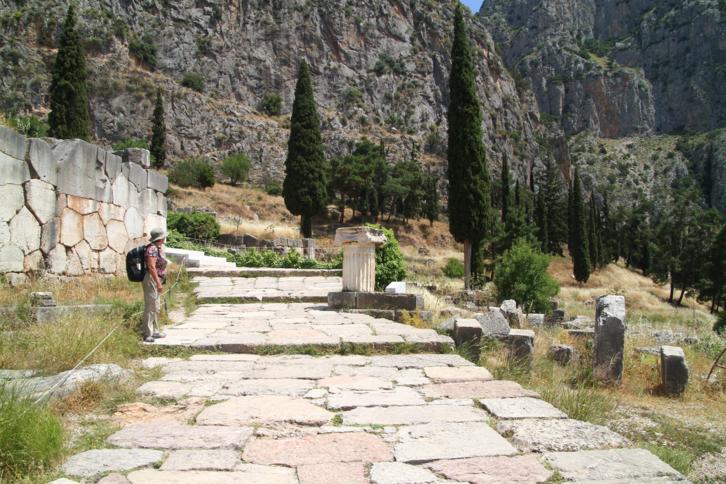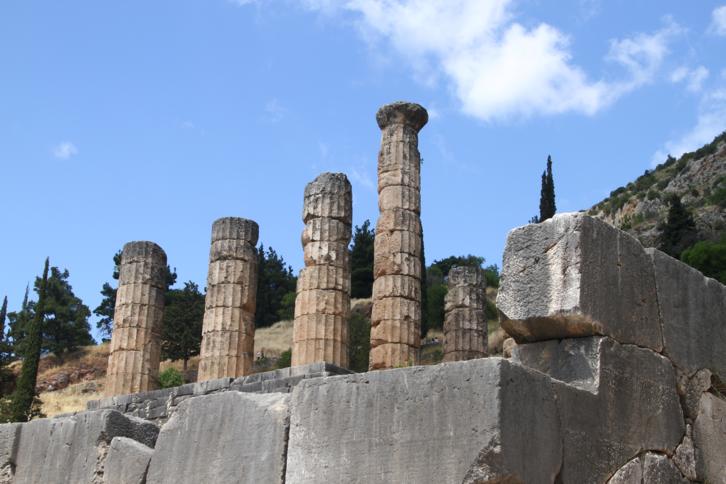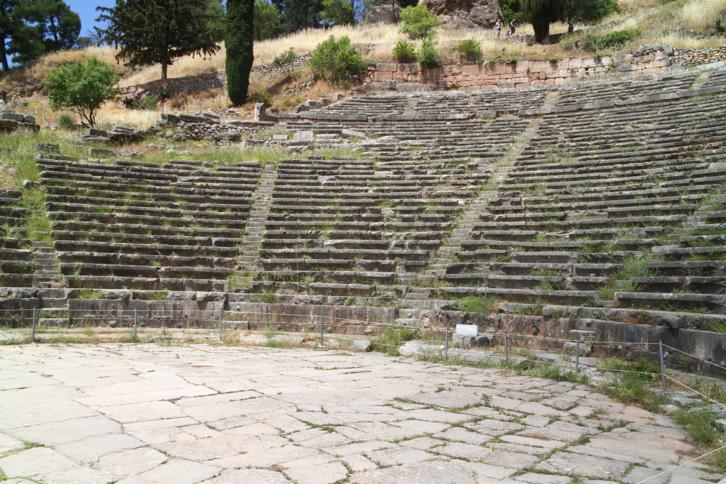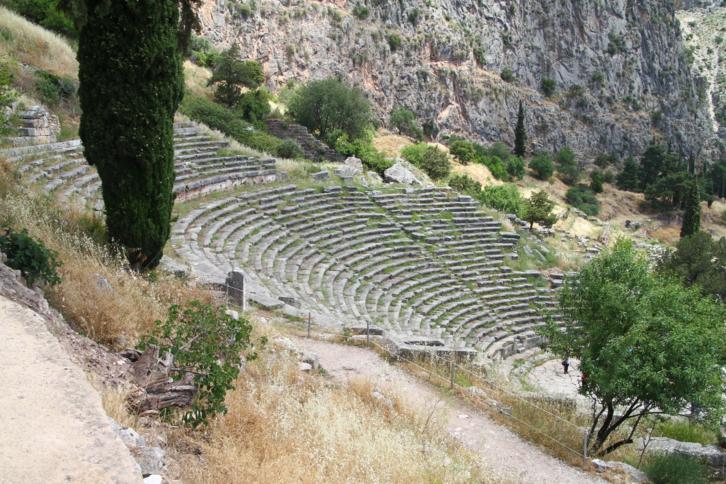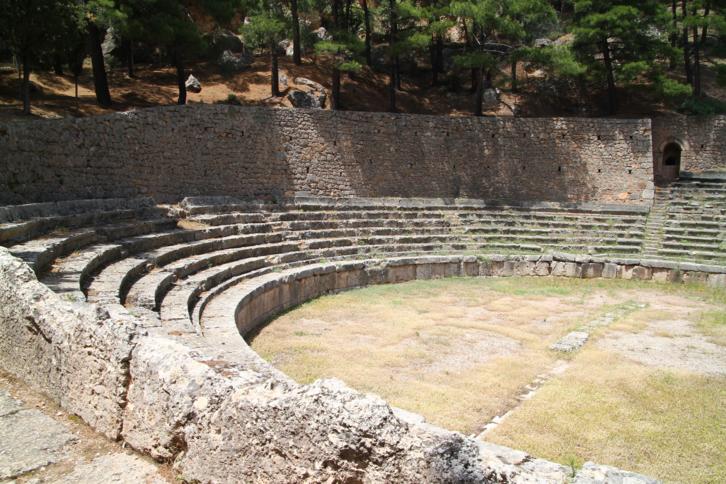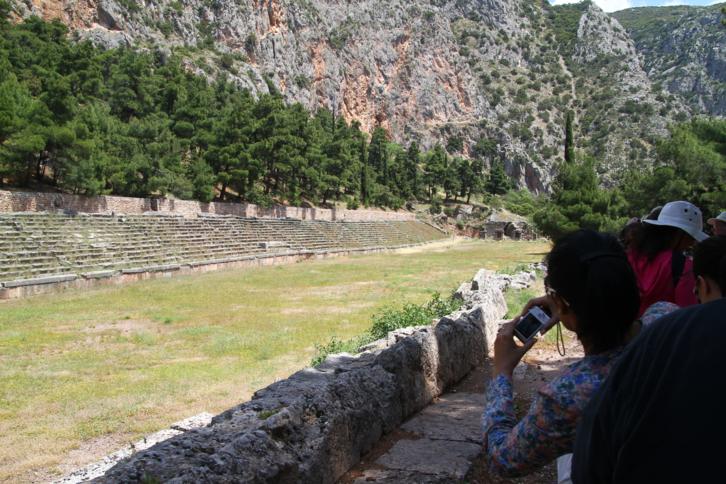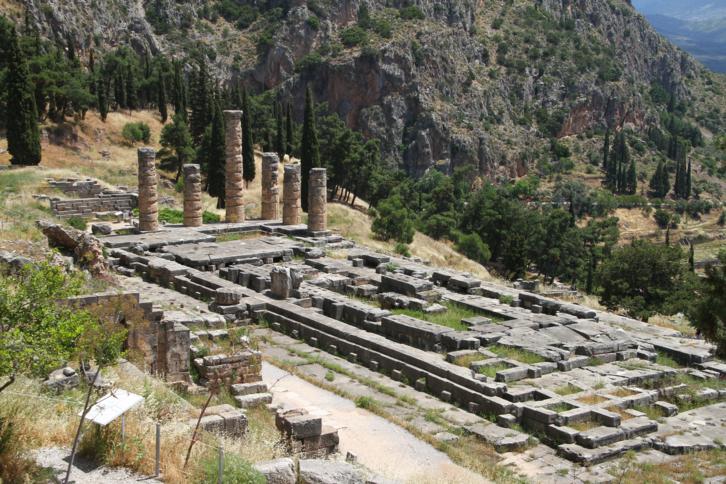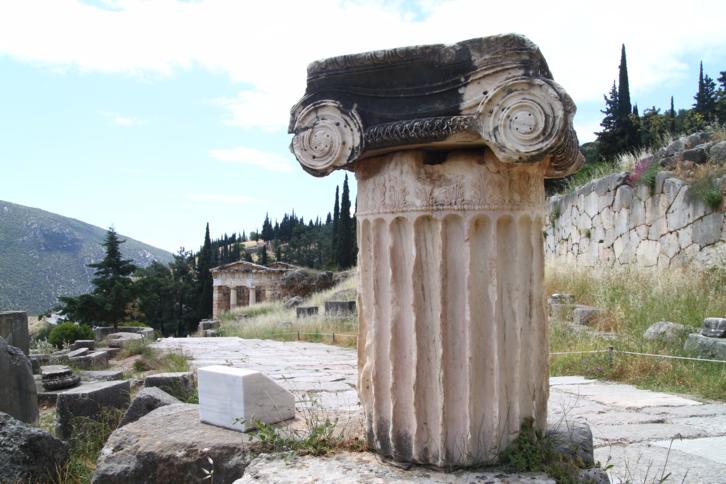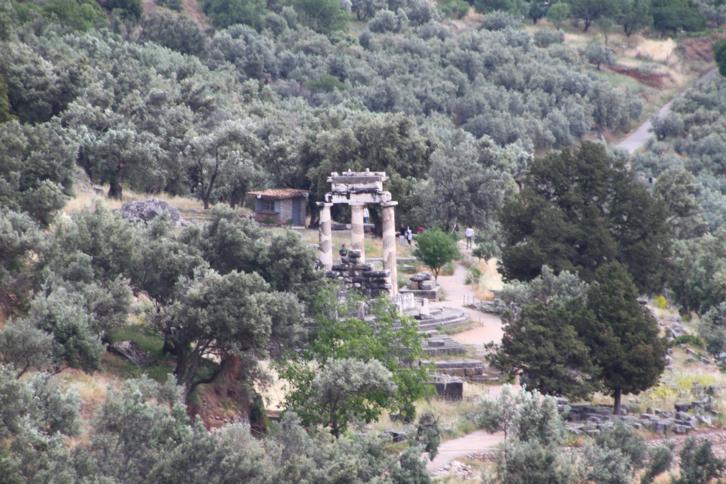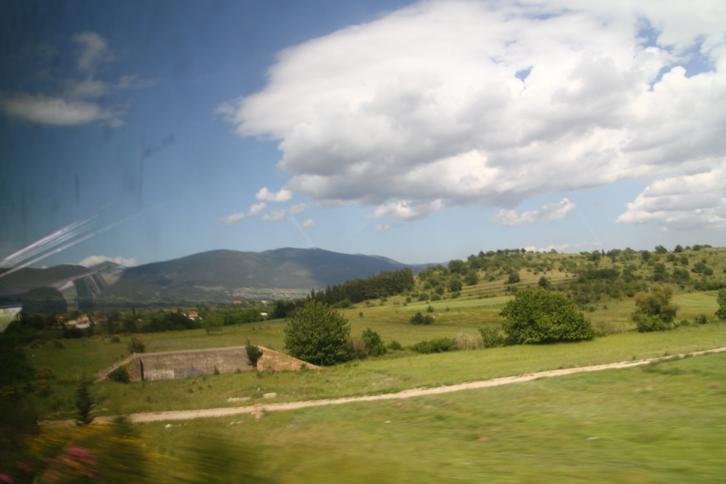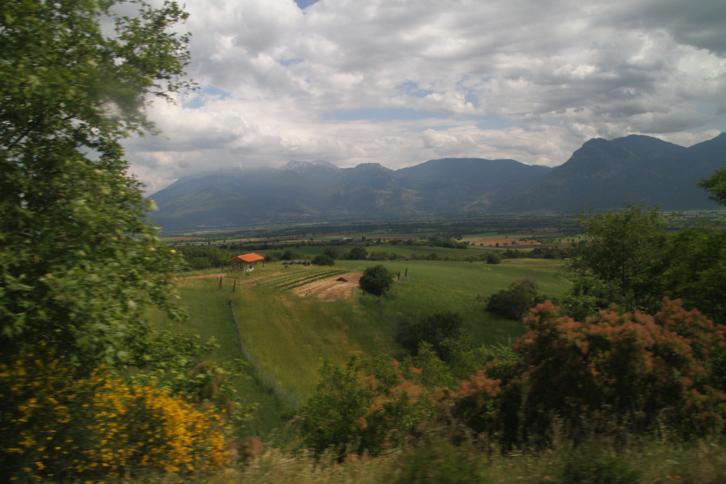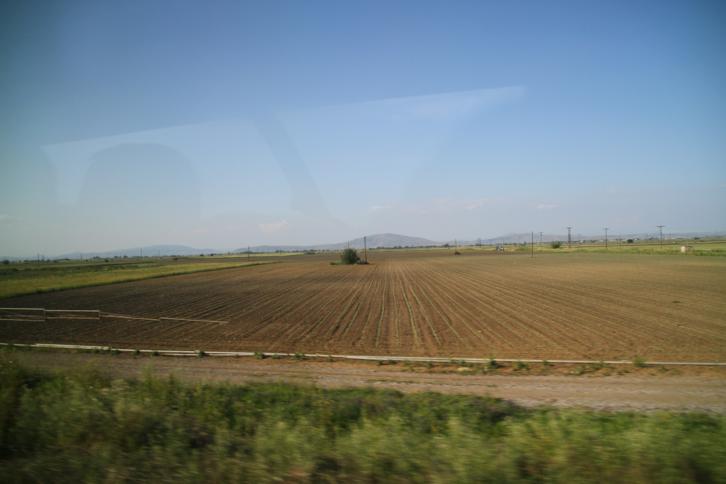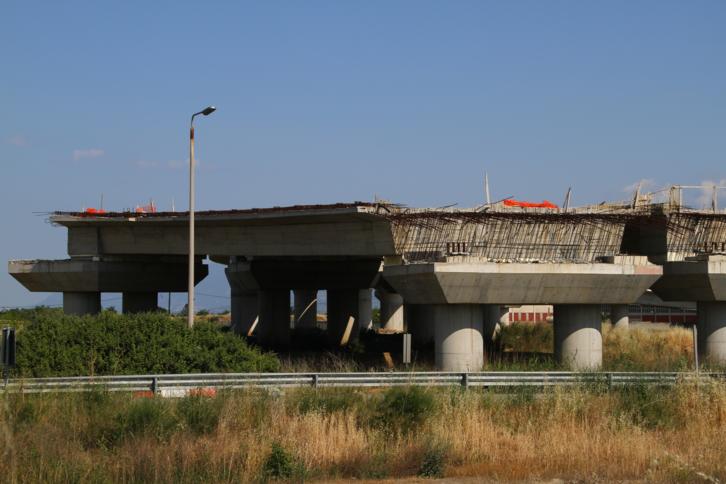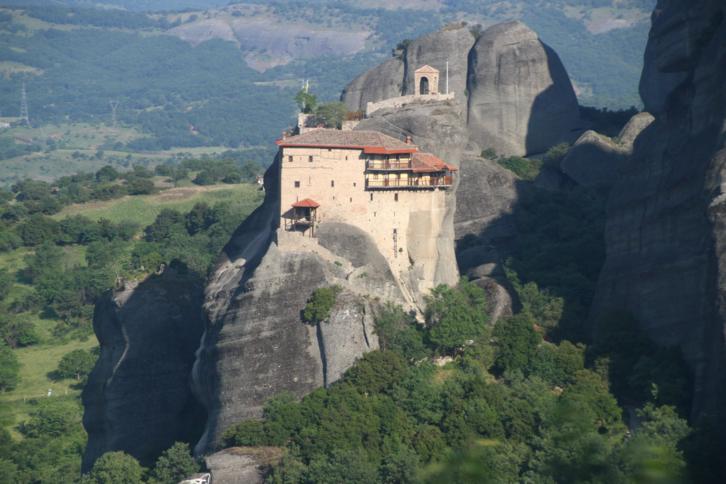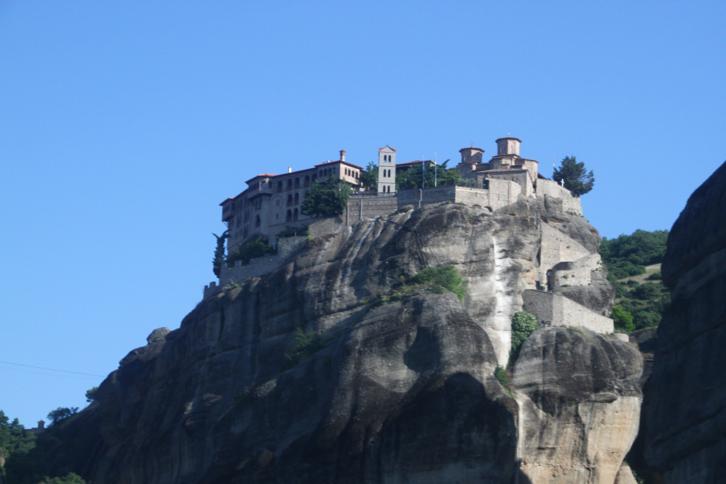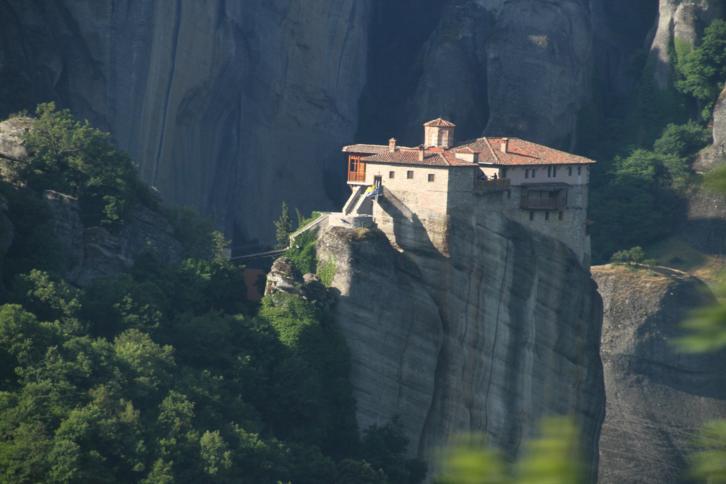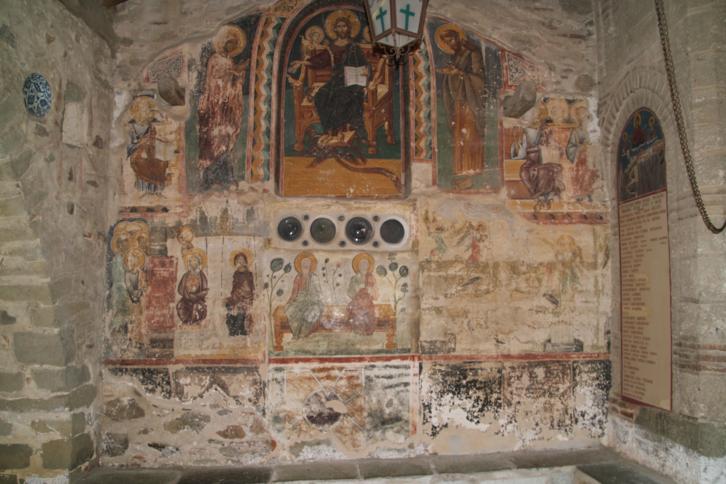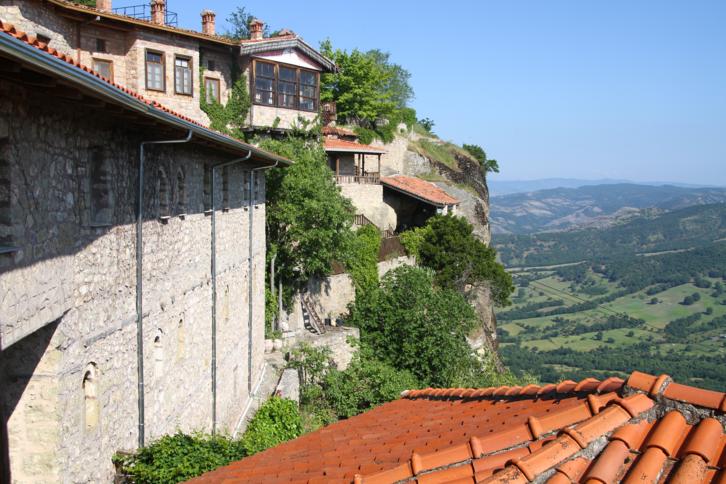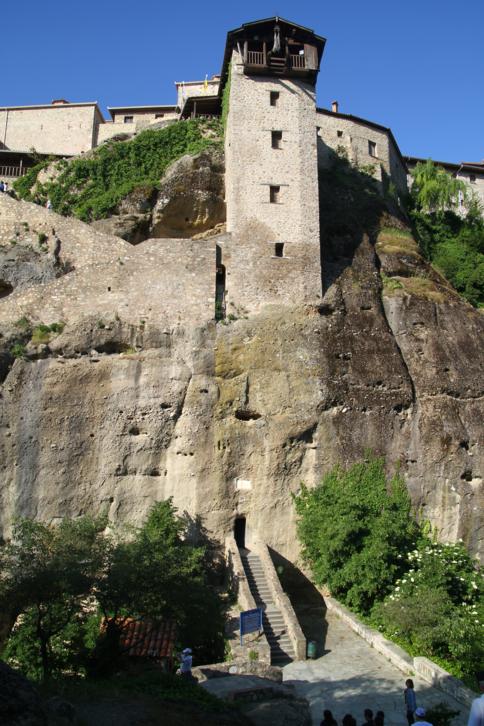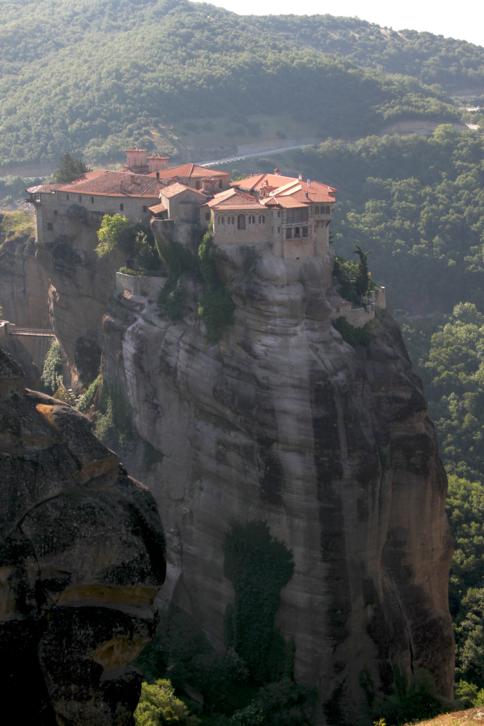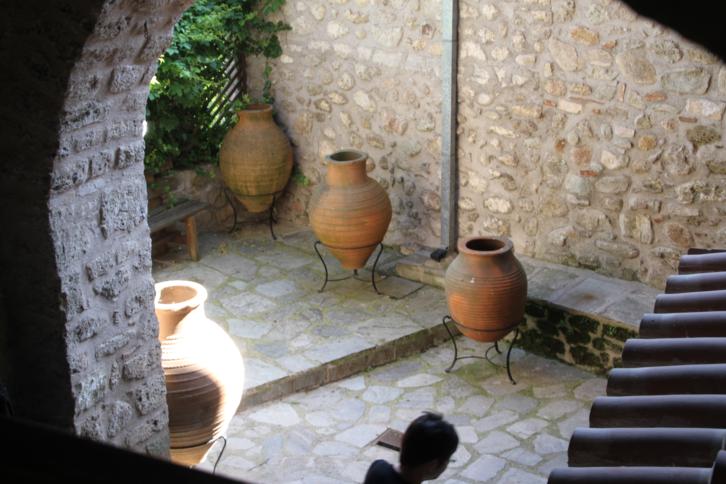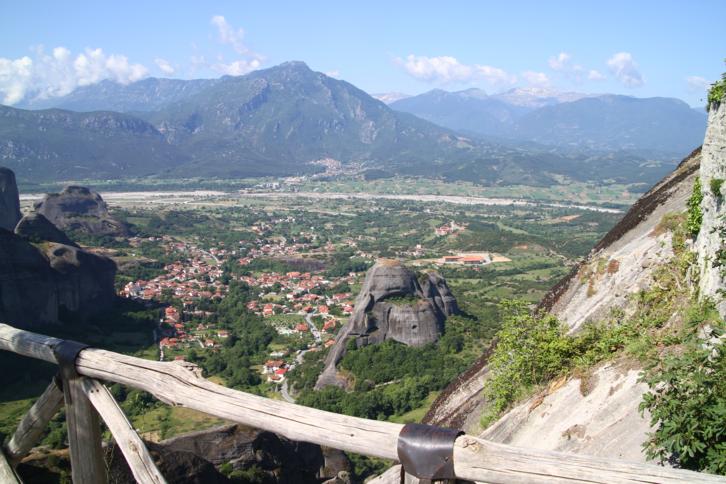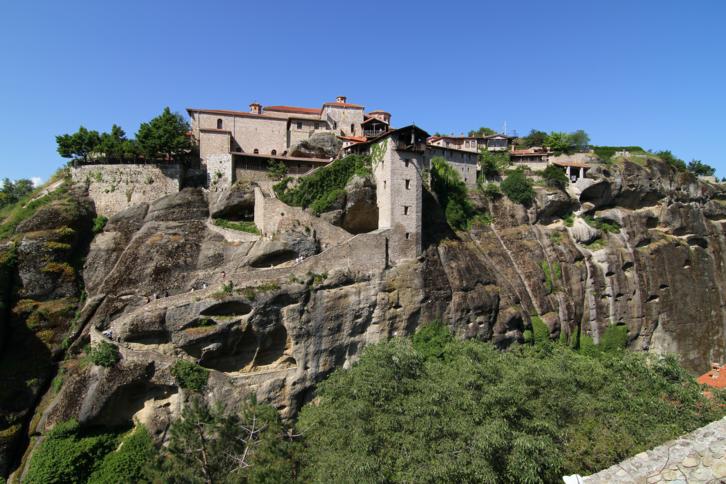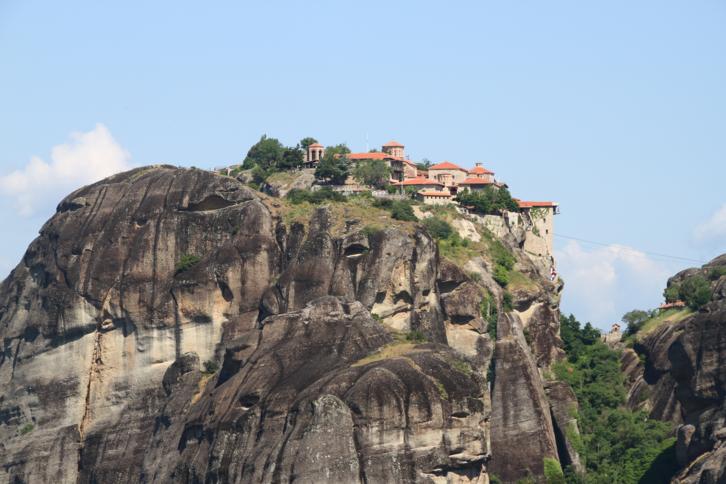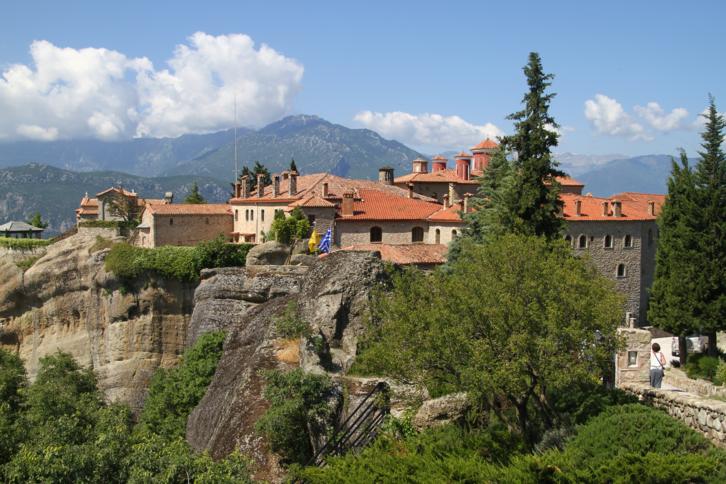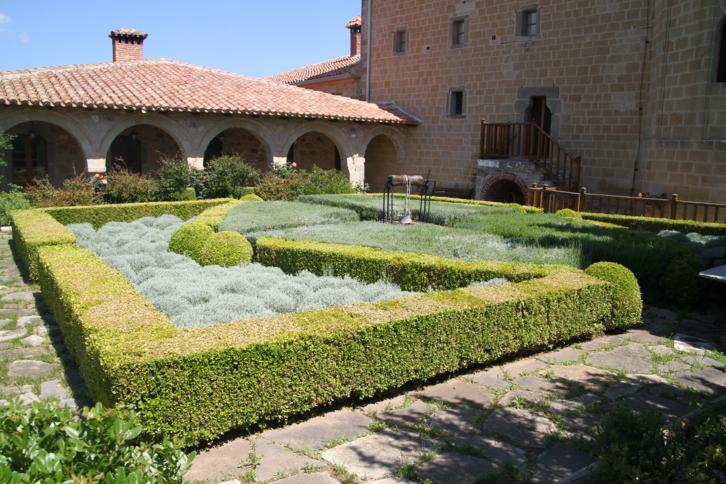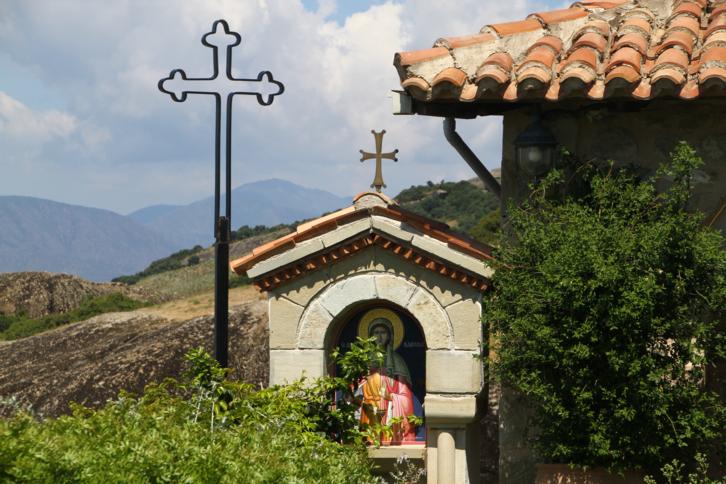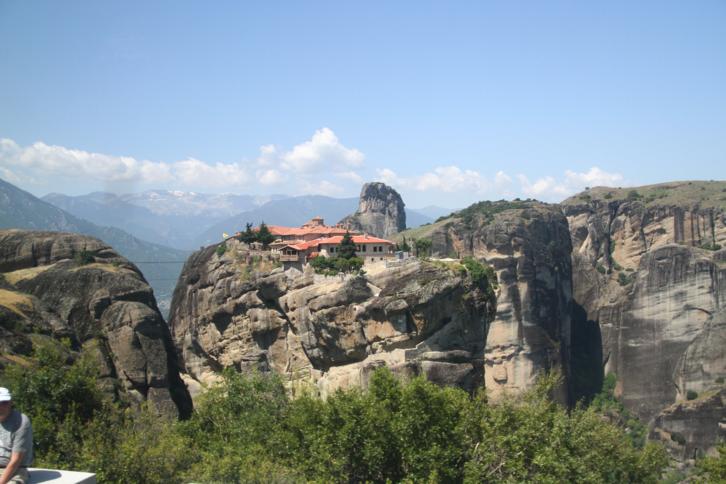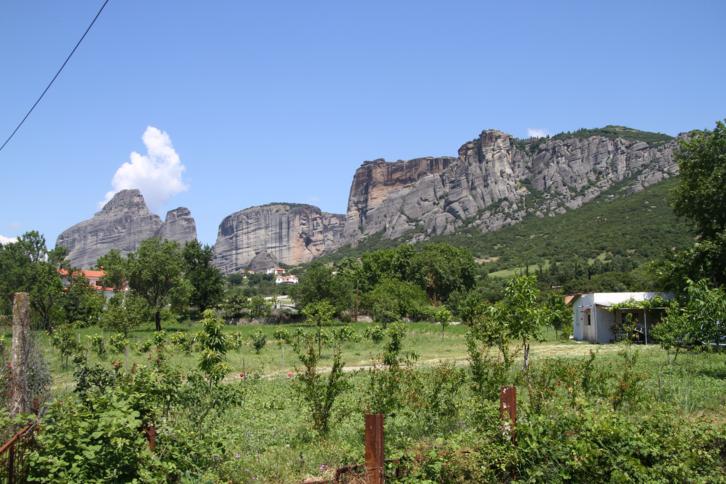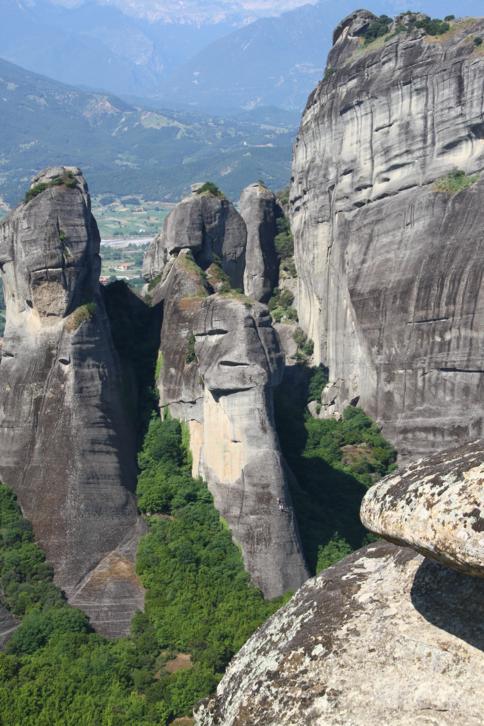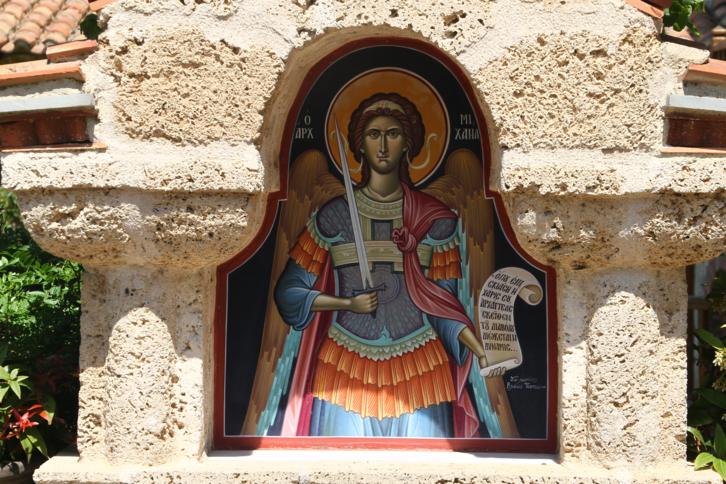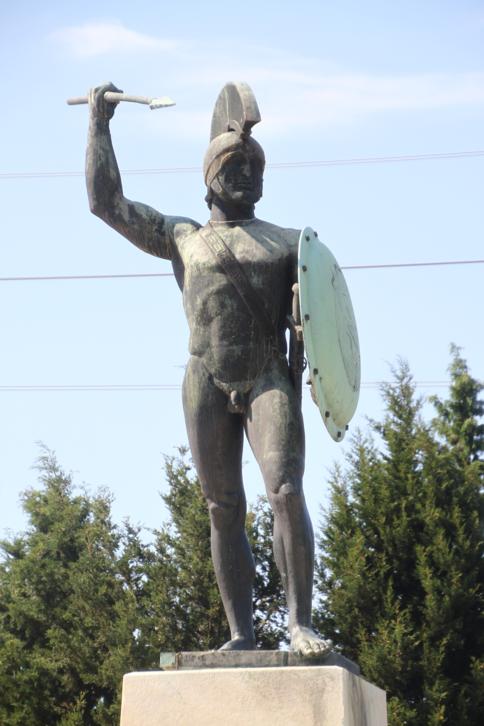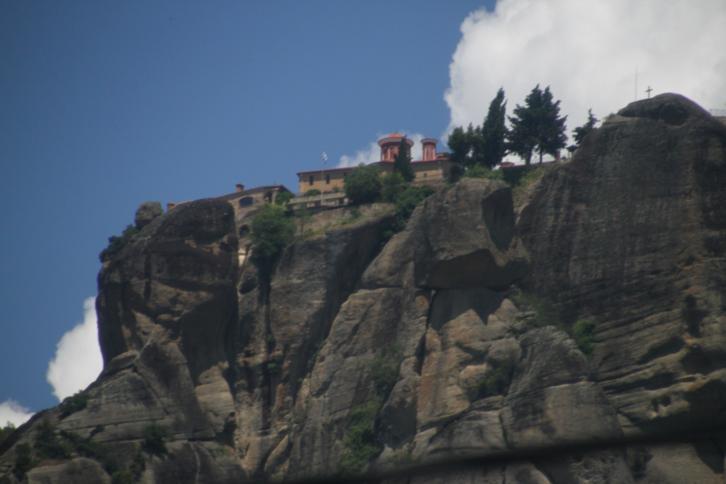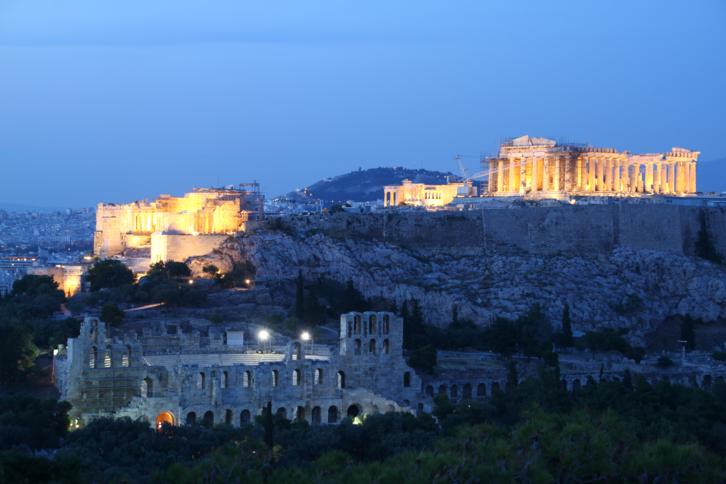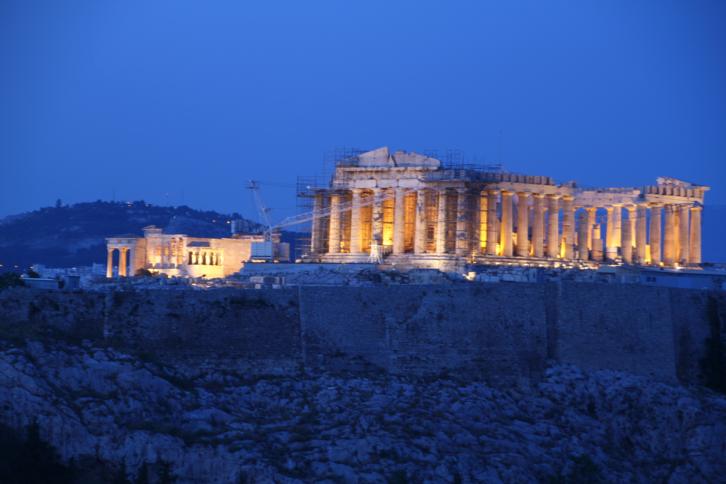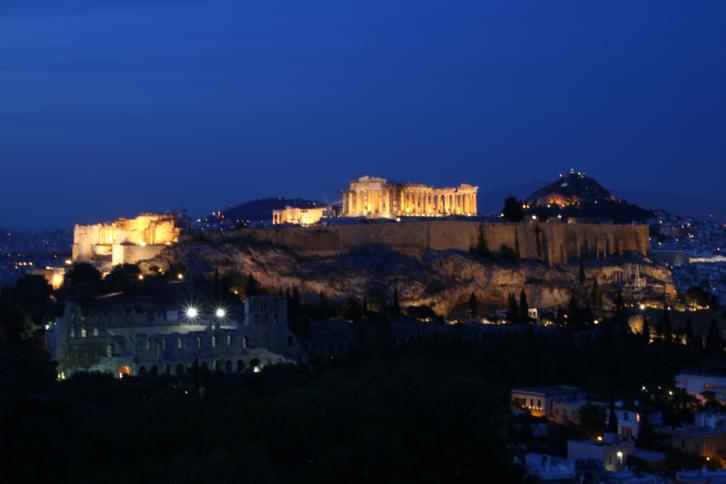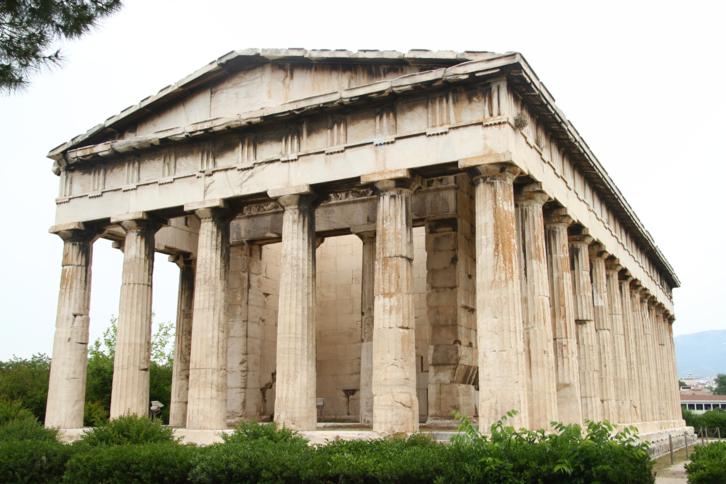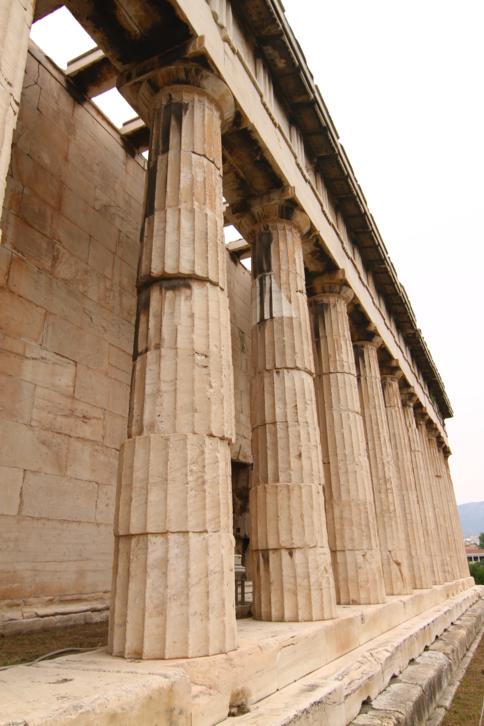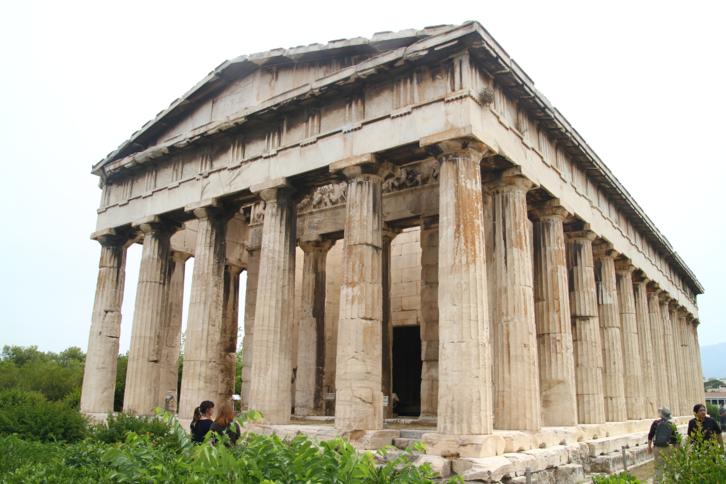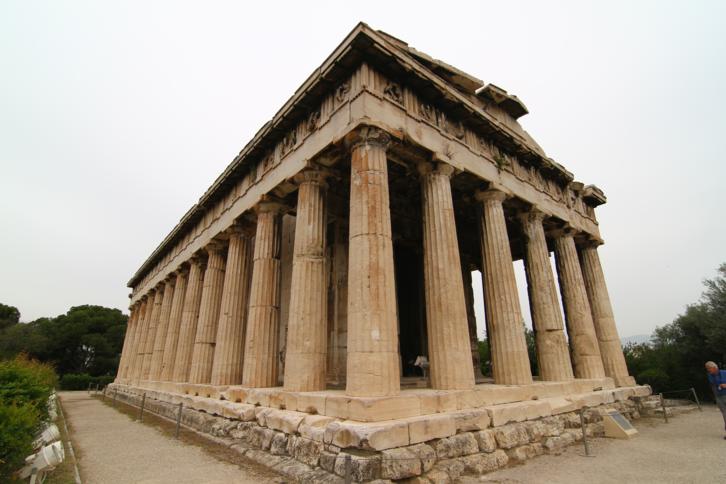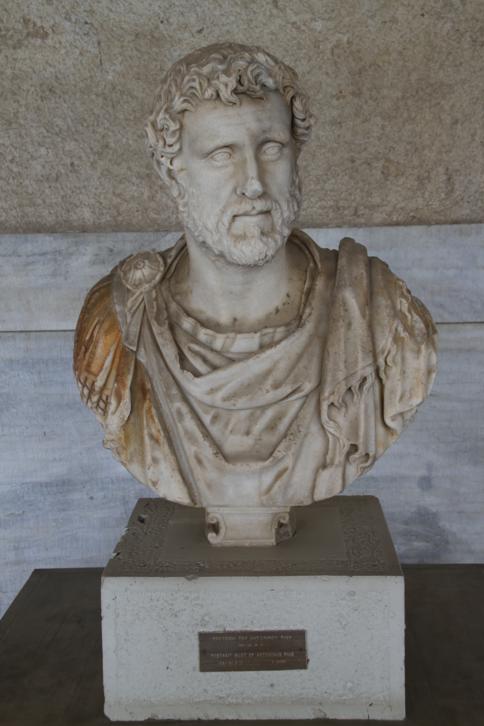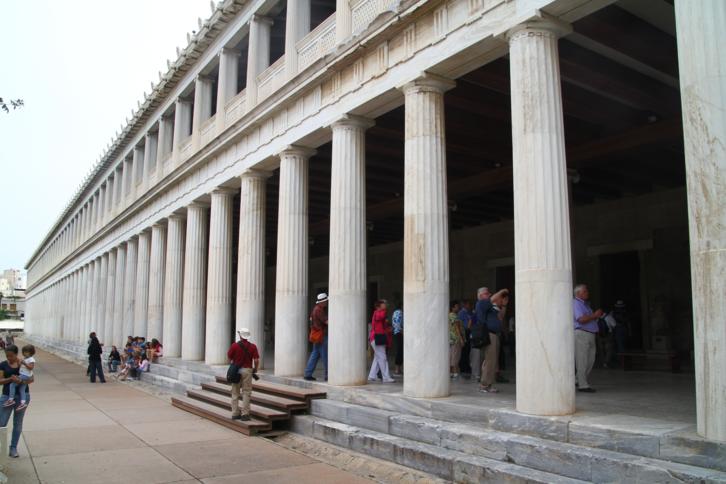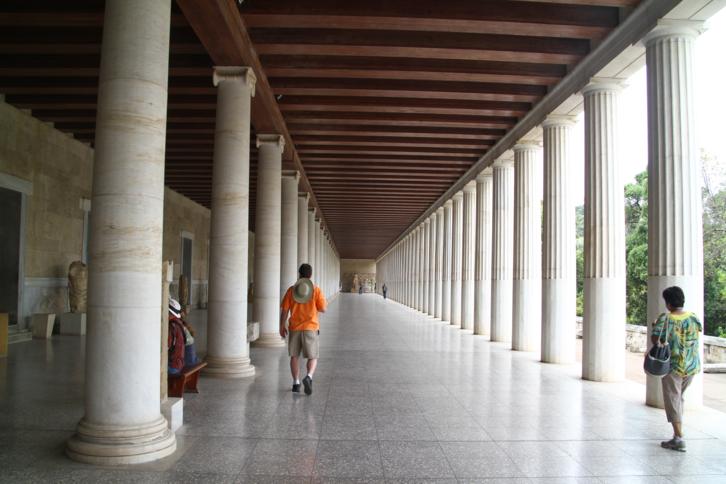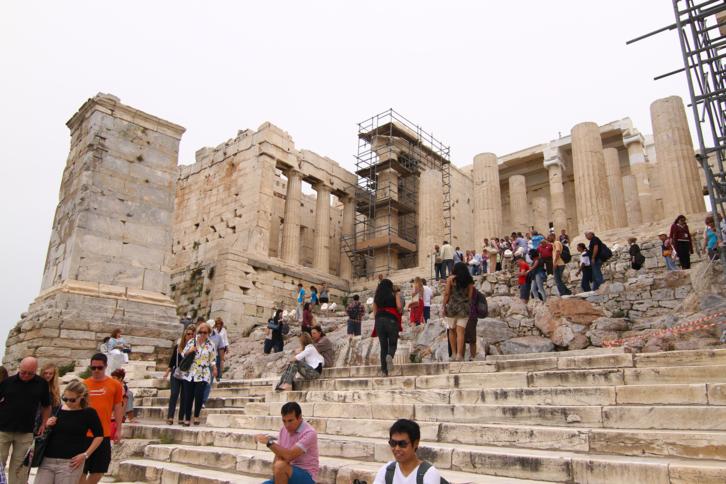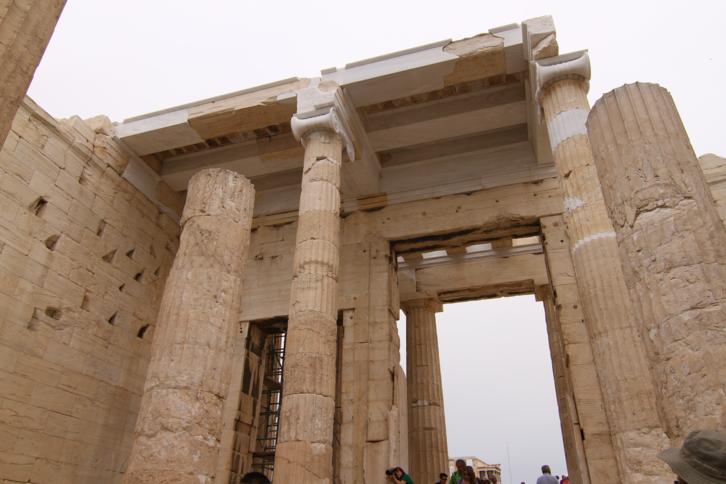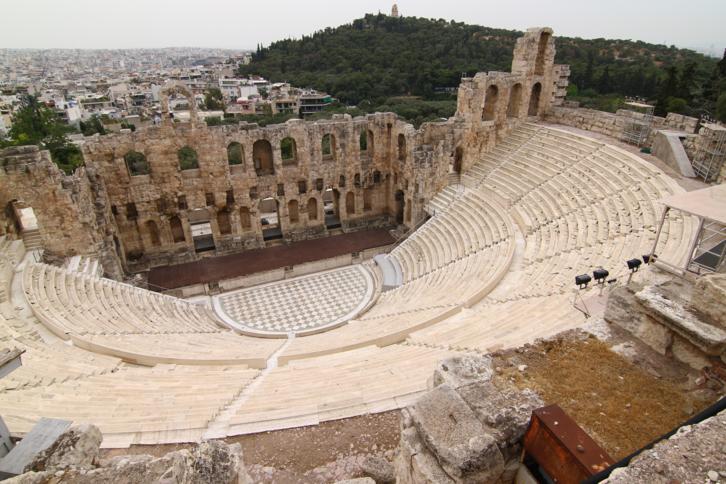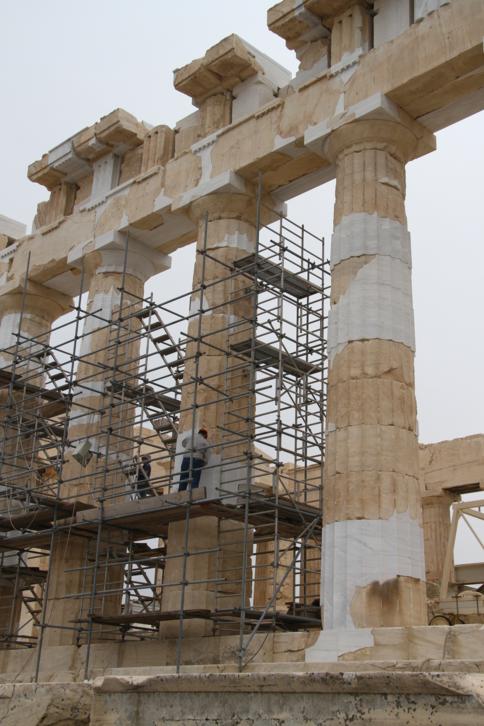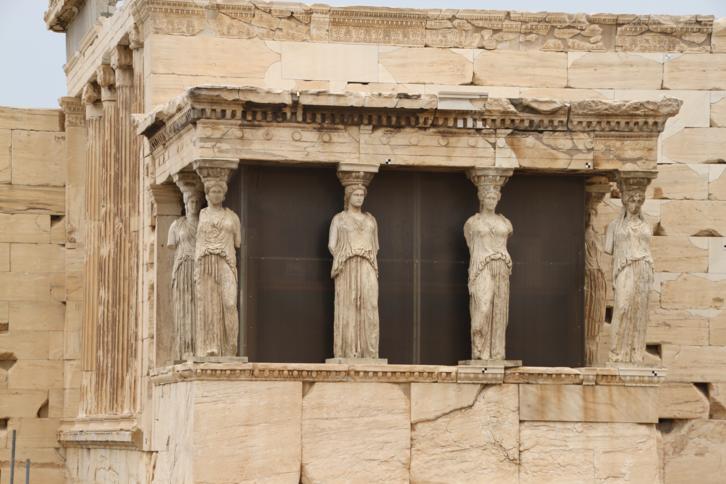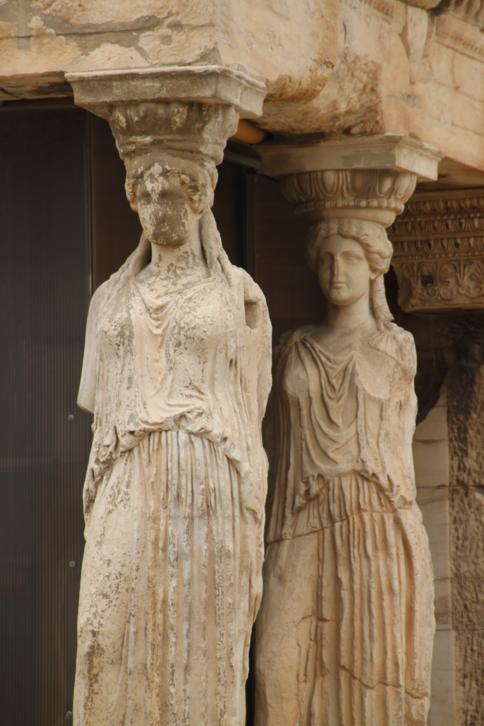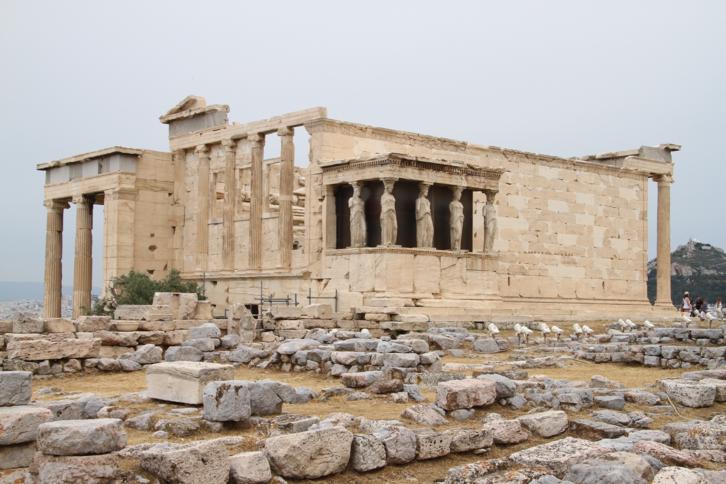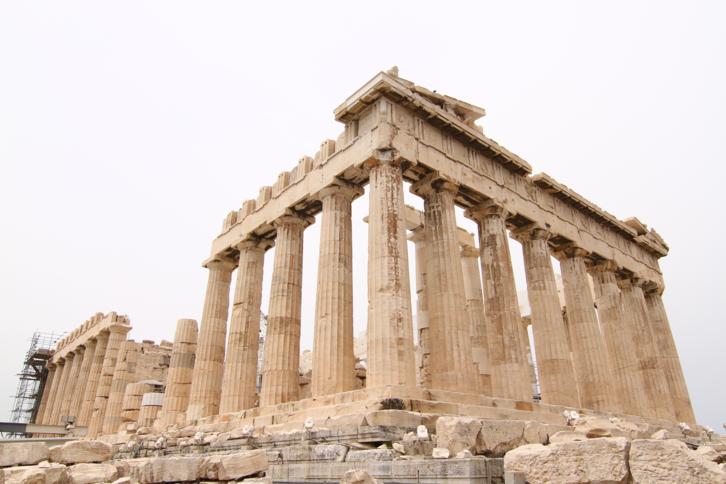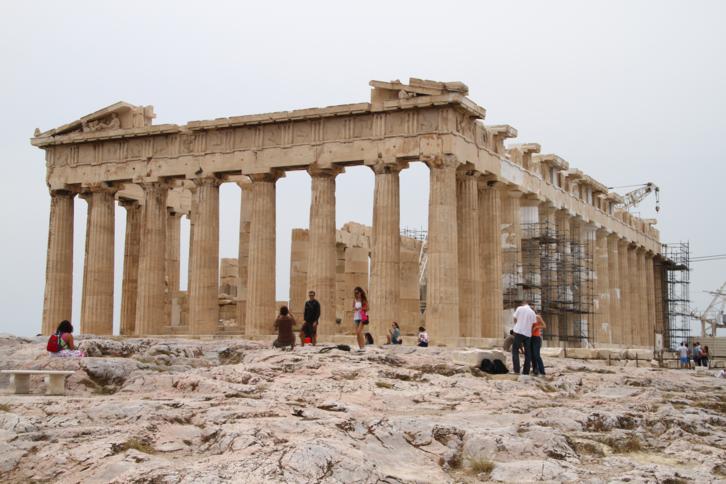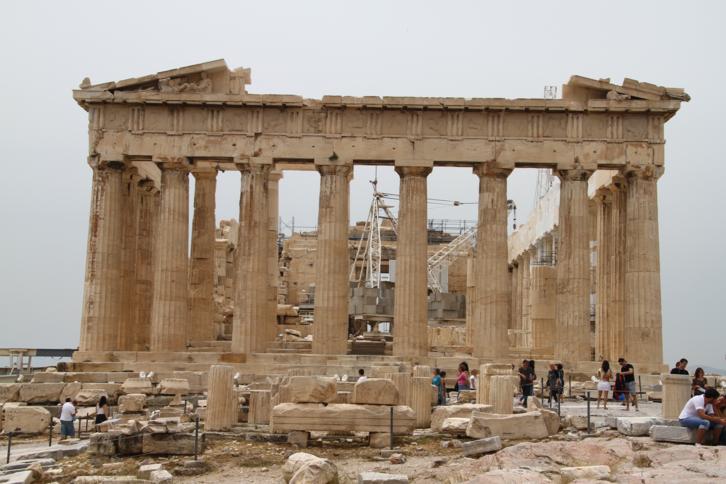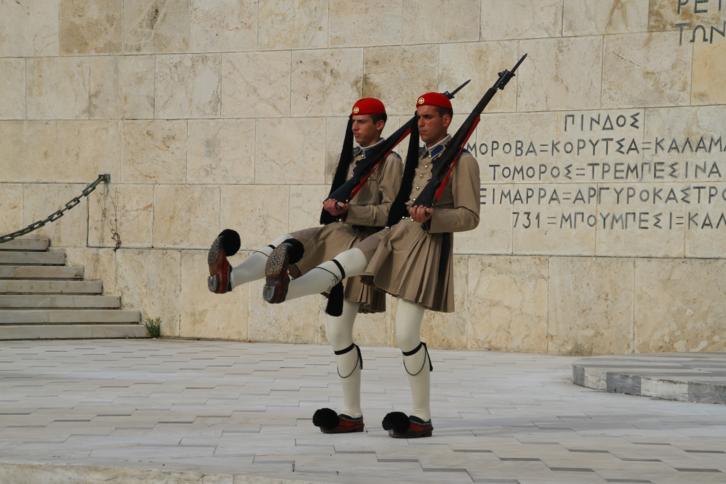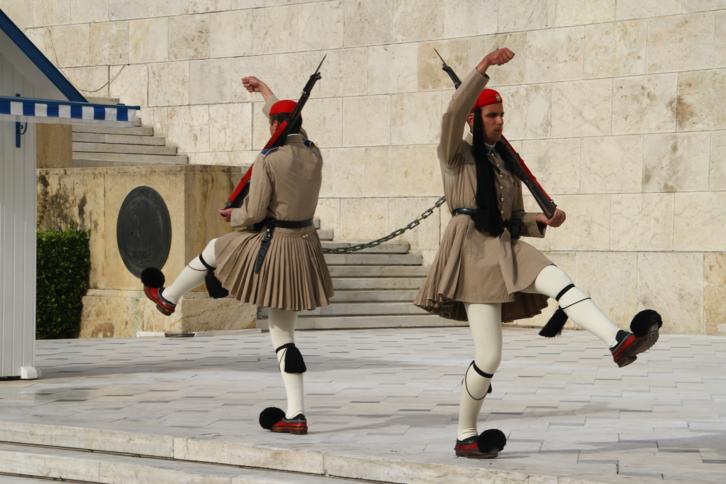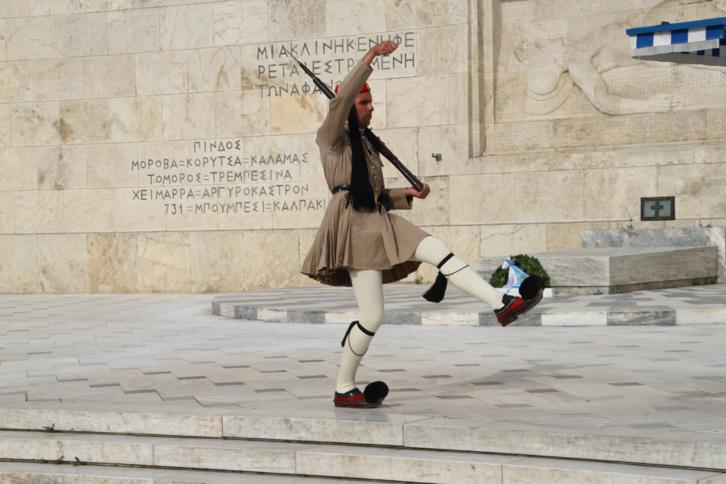|
Saturday 19th May 2012
We left the Athinaikon Hotel at about 7:15am, just as some of the
graffiti covered roller doors were being opened by the local shop
traders. Eventually a small bus with CHAT Tours came along and picked us up
from outside the Cecil Hotel, which was just around the corner from the Athinaikon. They took us to Syntagma Square where people got on and
others got off and luggage was moved. We then moved to the other side of
the Square and the process continued with out luggage being off loaded
into a large silver bus. Although the procedure looked complicated to
the uninitiated CHAT Tours had managed to pick everyone one up from their
hotels, or near by, and put them on the correct buses for their daily
tours all over Greece. We once again changed buses at Delphi for the
journey to Kalambaka. Somehow our luggage managed to stay with us.
We left Athens at about 8:45am and it was a smooth journey, although we
passed through a number of showers of rain on our way to Delphi. We
arrived at the Sanctuary of Apollo in Delphi at 11:50 and were given 1½
hours to look around, However ½ an hour of this time was taken up by our
tour guide, who was very difficult to understand because she spoke very
quickly and with a very heavy accent. An hour was really too short a
time to look around this huge archaeological site. One of the reasons
the site is so significant is that it has the four essentials that
archaeologists look for in one site, namely (1) An alter (2) A Temple
(3) A Theatre and (4) a stadium.
At 1:20pm we were picked up and taken to a
resort for lunch. An hour later we were on the bus again. This time the
bus was almost full (50 people) and with our luggage on board we set off
to Kalambaka. We passed through Lamia on the Aegean Sea coast of Greece
and the birthplace of Achilles. After one of two toilet/coffee stops,
crossing a mountain range or two and passing through fertile plains with
plenty of agriculture, we arrived at our destination just after 7:30pm.
We saw one or two of the effects of the
Global Financial Crisis. In one town, where we stopped for a break, a
substantial bridge/road project had been cancelled midway through
construction and also part of an interchange was incomplete.
Dinner was included as part of
the trip deal and we sat down to an excellent hot smorgasbord
meal at 8:00pm.
The Hotel Amalia is excellent. The room is air conditioned and
both room and bathroom are large. There are plenty of power
points, there is a TV and the Wifi is free. The shuttered window
opens out onto a green grassed lawn and garden. |
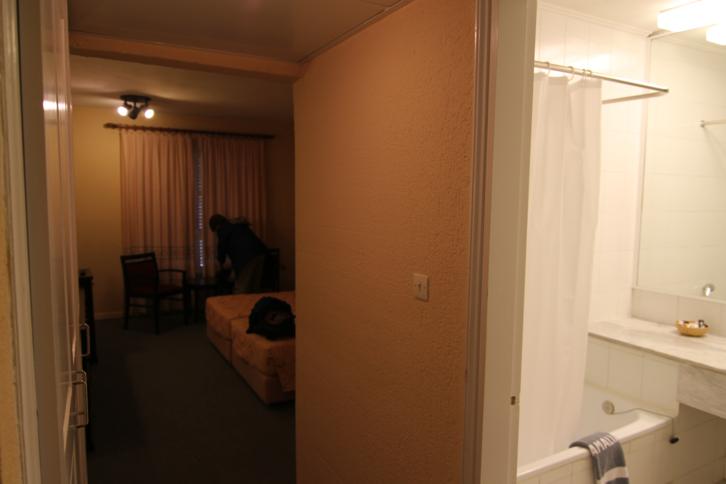 |
In about the 2nd century BC Rome took over
the area we now call Greece. In the 4th Century BC Constantine
decided the Byzantium area was too far from Rome to govern
properly and so made Constantinople the capital of the eastern
part of Rome's expanding empire. At about this time Greek became
the official language for the area and although it was
Christian, there were differences between the Church of Rome and
the local Orthodox Church. Differences being "was the holy ghost
part of the Father or the Son" and Rome's emphasis on Mary.
The Byzantine culture did not emphasize sculpture. But its art
is characterised by the black faces (Egyptian) and the wide open
eyes signifying the existence of the soul. "The eyes are the
windows to the soul."
There architecture began with the rectangular basilica which was
divided into three sections. Then came the cross shaped plan
layout followed by the octagonal shape. For entertainment the
bouzouki was the instrument of choice although for religious
purposes only the voice was used.
The 10th, 11th and 12th. centuries saw the best of the Byzantine
era. The Turkish Ottoman empire began to have an influence and
they eventually took over in1053AD. From 1821 until 1829 there
was a revolution when the Greeks finally broke away from the
Turkish rule. |
Sunday 20th May 2012
The bus picked us up at 8:00am and we wound our way up into the
mountains to the Holy Monastery of Grand Meteron.
We spent about an hour there before
moving onto the Holy Monastery of Saint Stephen which was actually a nunnery.
We
returned to Kalambaka at about 1:00pm, had lunch began the journey back
to Athens. We stopped to see the Leonida's Monument in Thermopylae for
the 300 Spartan warriors who were killed fighting the Persian army in
about 490BC, during the second of the four Persian battles. We arrived
back in Athens at about 8:00pm and were dropped off at the Airotel Parthenon
Hotel. We took a quick walk to get some
evening photos of the Acropolis, had dinner at about 9:15pm and went to
bed.
Monday 21st. May 2012
We had breakfast at about 8:30am and were out exploring Athens by about
10:00am. We watched in horror as thousands of people lined up to climb
the Acropolis. By the names on the signs held by the group leaders, at
least two cruise liners must have been in port. So we bypassed the
acropolis and ventured into the Ancient Agora, an area where the Romans
set up a village at the foot of the Acropolis. The Temple of Hephaestus
(5th century BC) is the best preserved building on the site.
The Stoa of Attalos, which houses the Museum
of Athenian Agora, looks in remarkable condition for a 2nd. century BC
structure, but it was restored by the American School of Classical
Studies between 1952 - 56.
As we were leaving the site at about 1:00pm
we noticed thousands of people pouring back out of the Acropolis.
Although all the guide books warn to avoid the hot afternoons on the
Acropolis, the weather was mild and slightly overcast, we decided to
climb the steps against the mass of humanity coming towards us. Once on
top, the place was almost deserted, with probably 300 - 400 people
wandering around the vast open site. The light was even and so
photographing the buildings was relatively easy. We passed through the
Propylaea and then moved around so that we looked down on the
Amphitheatre, which is still used today. We then walked around The
Erecthion with the six carved columns .... and then finally the
Parthenon itself with the massive restored columns and lintels.
|
"After climbing the
steps you are at the entrance, or the Propylaea, which was
completed in 432 BC just before the outbreak of the
Peloponnesian wars. The main architect was Mnesicles, a
colleague of Phidias. To your left is the Pinacotheca and a
Hellenistic pedestal and on the right the tiny temple to
Nike Athena or the Athena of Victory which commemorates the
Athenians victory over the Persians. This small temple
stands on a platform that overlooks the islands of Saronic
Gulf and used to house a statue of Athena. It was dismantled
by the Turks in 1686 so they could use the platform for a
large cannon. It was rebuilt between 1836 and 1842 and again
taken apart and rebuilt in 1936 when it was discovered that
the platform was crumbing. If you looking from the propylaea
towards Pireaus on a clear day you can see ships waiting
outside the port of Pireaus, the islands and the mountains
of the Peloponessos beyond.
The Parthenon and other
main buildings on the Acropolis were built by Pericles in
the fifth century BC as a monument to the cultural and
political achievements of the inhabitants of Athens. The
term acropolis
means upper city and many of the city states of ancient
Greece are built around an acropolis where the inhabitants
can go as a place of refuge in times of invasion. It's for
this reason that the most sacred buildings are usually on
the acropolis.
The Parthenon was designed by the architects Kallikrates and
Iktinos as the home of the giant statue of Athena. It took
9 years to build and was completed in 438 BC and is probably
the most recognizable structure in the world next to the
golden arches of McDonalds. From a temple it became a
church, a mosque and finally as a storage facility for
Turkish gunpowder. In 1687 the Venetians bombarded it from
below. A cannon ball hit the gun powder and blew it up. What
makes the Parthenon so fascinating is that to look at it you
would think that is is made up of interchangable pieces. For
example the columns are stones placed on top of each other
and you could replace one piece of a column with any of the
others. Not true. Each piece of the Parthenon is unique and
fits together like the world's biggest and heaviest jigsaw
puzzle. Lines that look straight are actually not. The
ancient Greeks understood the mechanics of site and that to
make a line look straight it had to be tapered or curved.
The Parthenon is the most perfect and the most immitated
building in the world. The restoration work you see has been
going on for the last 30 years and may go on for another 30.
The more they try to put it back together the more respect
and awe they have for the ancient Greeks.
|
The
Erecthion sits on the most sacred site of the
Acropolis where Poseidon and Athena had their
contest over who would be the Patron of the city.
Poseidon thrust his trident into the rock and a
spring burst forth, while Athena touched the ground
with a spear and an olive tree grew. Athena was
declared the victor and the great city of Athens was
named for her while Poseidon was given a small
village in Syros after it was discovered he had
merely ruptured a water main. (not really).The
building itself contains the porch of the maidens or
Caryatids which are now copies, four of which have
been placed in the Acropolis museum, hopefully to be
reunited with a fifth taken from the Acropolis by
Lord Elgin and put in the British Museum more than a
century ago."
Taken from Matt Barrett's - "The Acropolis of
Athens." |
|
Later in the afternoon we
walked down to Syntagma Square and to Parliament House where we
witnessed a couple of people from the Department of Silly Walks
strutting their stuff in slow motion.
|


